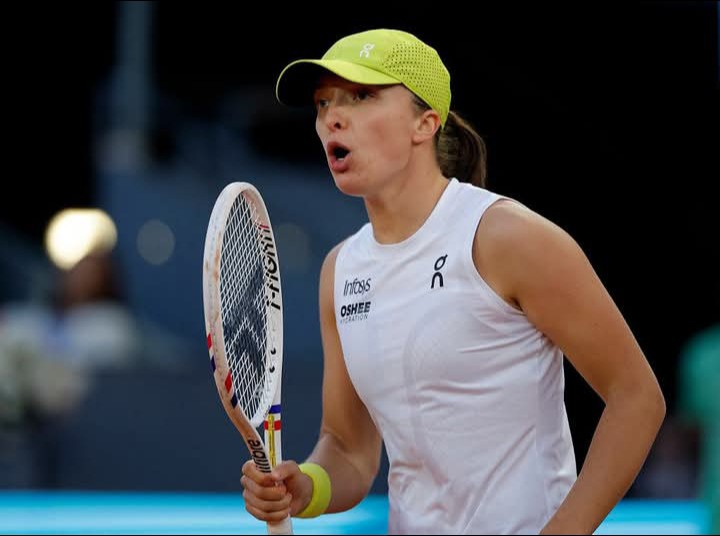WATCH: Wawrinka Robbed of Crucial Point by Umpire’s Insane Mistake in Shanghai
Umpiring Blunder at the 2024 Shanghai Masters: The Unbelievable Mistake That Went Unnoticed In recent months, the ATP Tour has seen several high-profile umpiring mistakes, but the error during Stan Wawrinka’s match against Flavio Cobolli at the 2024 Shanghai Masters may be one of the most shocking. With the advent of advanced technology in tennis,…
Umpiring Blunder at the 2024 Shanghai Masters: The Unbelievable Mistake That Went Unnoticed
In recent months, the ATP Tour has seen several high-profile umpiring mistakes, but the error during Stan Wawrinka’s match against Flavio Cobolli at the 2024 Shanghai Masters may be one of the most shocking. With the advent of advanced technology in tennis, many believed that such controversies would be a thing of the past. However, this incident, like others, proved that human error still plays a part in the game.
Many ATP tournaments now rely on automatic line-calling systems, significantly reducing disputes over line calls. These systems have virtually replaced traditional line judges, although some events, such as the Shanghai Masters, continue to use the conventional system. Players in these tournaments are allowed three challenges per set to contest close calls.
Despite the increased use of technology, controversies have not disappeared. A few months ago, Taylor Fritz found himself in a strange situation when his opponent, Brandon Nakashima, hit a shot that was clearly out, but the automatic line-calling system failed to register it, leaving Fritz visibly frustrated. Similarly, Felix Auger-Aliassime faced confusion during a match against Jack Draper at the Cincinnati Open. The umpire failed to call a clear double bounce on match point, which ultimately cost Auger-Aliassime the match. Fans watching were puzzled as to why the replay, visible to the audience, could not be used to correct the error.
https://x.com/josemorgado/status/1843320073425150196?t=aWYKWSCcRFBCvWwX7yppNA&s=19
However, the incident during the Wawrinka-Cobolli match at the 2024 Shanghai Masters was different. This time, technology was not at fault. It was purely human error, and even more surprisingly, no one—neither players nor officials—caught it at the moment.
Wawrinka, a wild card entrant, was serving down 7-6, 6-7, 0-1 in the third set. After delivering a strong serve, which Cobolli failed to return, Wawrinka won the opening point of the game. The umpire, Carlos Bernardes, correctly called the score. Shortly after, Bernardes called for electrolytes to be brought to Cobolli, who had previously requested them.
What followed was a nearly unbelievable lapse. Cobolli executed a perfect drop shot on the next point, leveling the score at 15-15. However, Bernardes inexplicably announced the score as 0-30, giving Cobolli an advantage he had not earned.
The mistake went unnoticed by everyone on the court, including both players, Wawrinka and Cobolli, as well as the match officials and the audience. Such a glaring mistake, especially at a tournament of this caliber, is rare, making it all the more shocking that it wasn’t caught in real-time.
The impact of Bernardes’ error was significant. Cobolli took advantage of the incorrect scoreline and broke Wawrinka’s serve in that game, the only break in the third set. Cobolli went on to win the match 6-7, 7-6, 6-3, advancing to the next round.
While it’s impossible to say for sure that Wawrinka would have held his serve if the score had been called correctly, the difference between 15-15 and 0-30 is crucial, especially in a tightly contested match like this. No breaks occurred for the rest of the set, indicating that the incorrect score may have played a pivotal role in Wawrinka’s eventual defeat.
Carlos Bernardes, one of the most experienced umpires on the ATP Tour, is set to retire at the end of this season. His career has spanned numerous high-stakes matches, but this mistake will surely be a memorable part of his final year in tennis.
This incident highlights that despite the technological advancements in tennis, human error still influences the game. As the debate continues over the balance between tradition and technology, moments like this remind us that the human element in sports, for better or worse, is here to stay.





![Iga Świątek – Coco Gauff [RELACJA NA ŻYWO]](https://news-break.co.uk/wp-content/uploads/2024/11/iga-swiatek94.avif)
